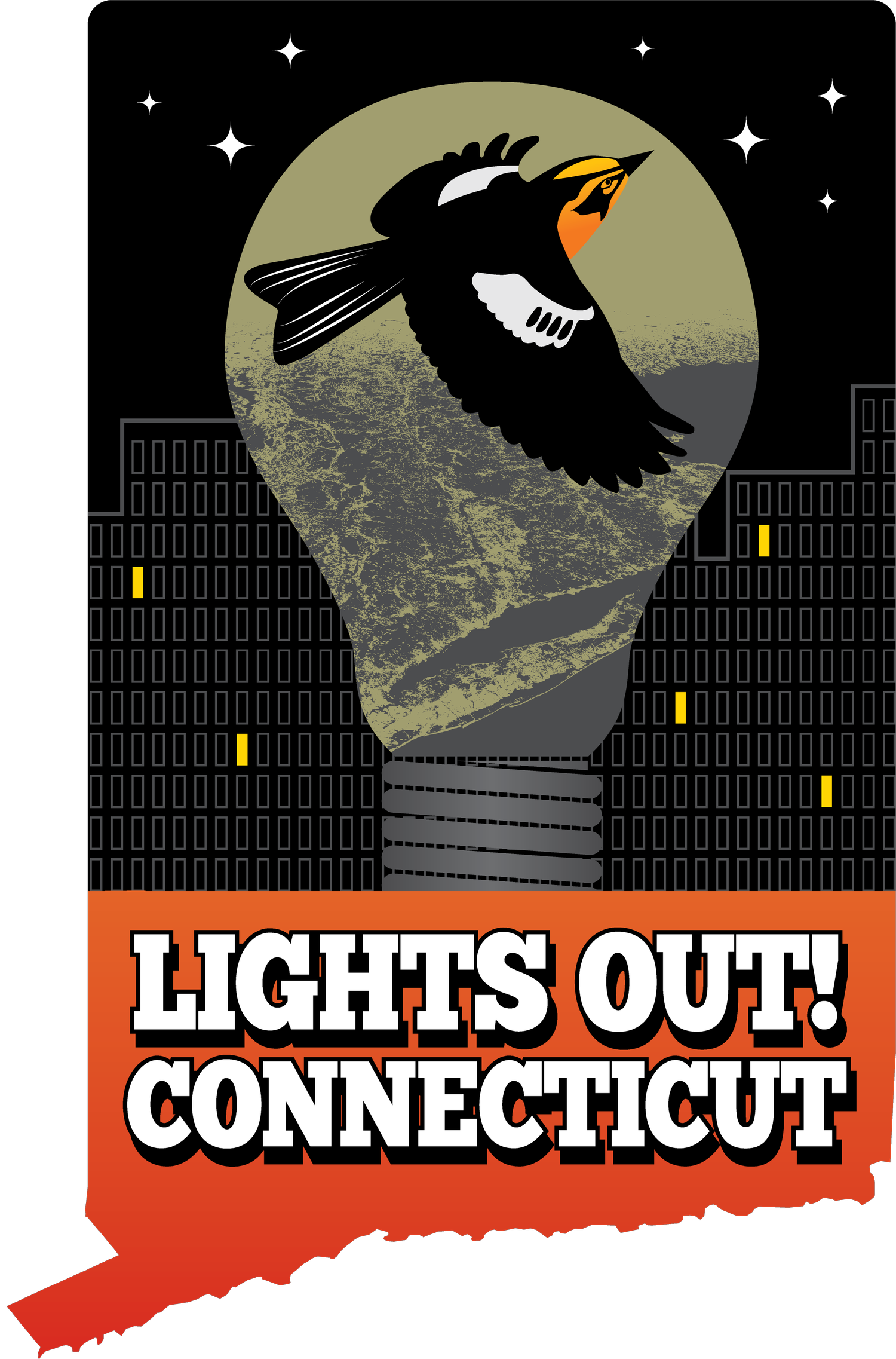Lights Out Connecticut to Help Protect Millions of Migratory Birds
(Milford, CT) April 20, 2022—Last night, the Connecticut Ornithological Association launched its new Lights Out Connecticut initiative to help save migratory birds in the state of Connecticut. Connecticut is now the fourth state in the nation, after Colorado, Georgia, and Texas, to have a dedicated statewide “Lights Out” program.
Through Lights Out Connecticut, residents, businesses, schools, and building managers pledge to turn off non-essential exterior lighting each night from 11 p.m. to 6 a.m. during periods of peak bird migration.
Because most migratory birds in North America travel at night, artificial light from buildings and other structures can attract and disorient them, leading them off course into fatal window collisions. The result is catastrophic: an estimated 355-988 million bird deaths in the United States each year.
“Our decisions about lighting matter to the millions of migratory birds who rest and nest in Connecticut each year,” said Craig Repasz, Co-chair of Lights Out Connecticut and long-time Hamden resident. “While our cities’ bright lights present a risk to birds, it also means that our state has the opportunity to make a tremendous impact to save wildlife just by turning out lights.”
The launch event drew representatives from many of Connecticut’s leading bird and wildlife conservation groups, including Audubon Connecticut, Connecticut Audubon Society, Conte Urban Partnership, Hartford Audubon Society, the New Haven Bird Club and the Menunkutuck Audubon Society — as well as faculty and students of Yale Divinity School, Yale Law School, the Yale School of the Environment, the Yale Peabody Museum and St Joseph University.
Viveca Morris, Associate Research Scholar in Law and the Executive Director of the Law, Ethics & Animals Program at Yale Law School, presented on her multiyear bird mortality studies at Yale School of Management’s Edward P. Evans Hall. In partnership with colleagues and the Yale Peabody Museum of Natural History, she has documented that Evans Hall, constructed almost entirely of glass, is responsible for more than 430 bird deaths since 2018—including many species of concern.
Participants discussed the links between bird collisions and lighting — and planned through the new Lights Out Connecticut website to offer a place where local residents can commit to turning off lights during migration and report bird fatalities across Connecticut.
“Birds are an important part of our ecosystem. They eat pests, move seeds around, fertilize the soil, and provide us with beautiful birdsong,” said Meredith Barges, Lights Out Connecticut Co-Chair and Yale Divinity School student. “But as their numbers decline, they desperately need our help. I encourage everyone to do their part to switch off lights this spring to help save birds.”
Cities like Stamford and New Haven are situated along the Atlantic Flyway, an important migratory path for birds. Millions of birds that move along and across the Long Island Sound depend on safe passage through Connecticut to reach their nesting and wintering grounds. Excessive artificial lighting makes their long-distance journeys more difficult and dangerous.
“Darkening our night sky for Lights Out Connecticut is an important step toward making our state safer for birds and other wildlife,” said Bob Pattison, Vice President of the Connecticut chapter of the International Dark Sky Association. “Our good stewardship of the night sky can not only save birds and trim our energy bills but also make a big difference for human health. We benefit from less light pollution too!”
To learn more about this effort, visit www.lightsoutct.org
Image Caption: Connecticut Warbler (Matt Stratmoen)

